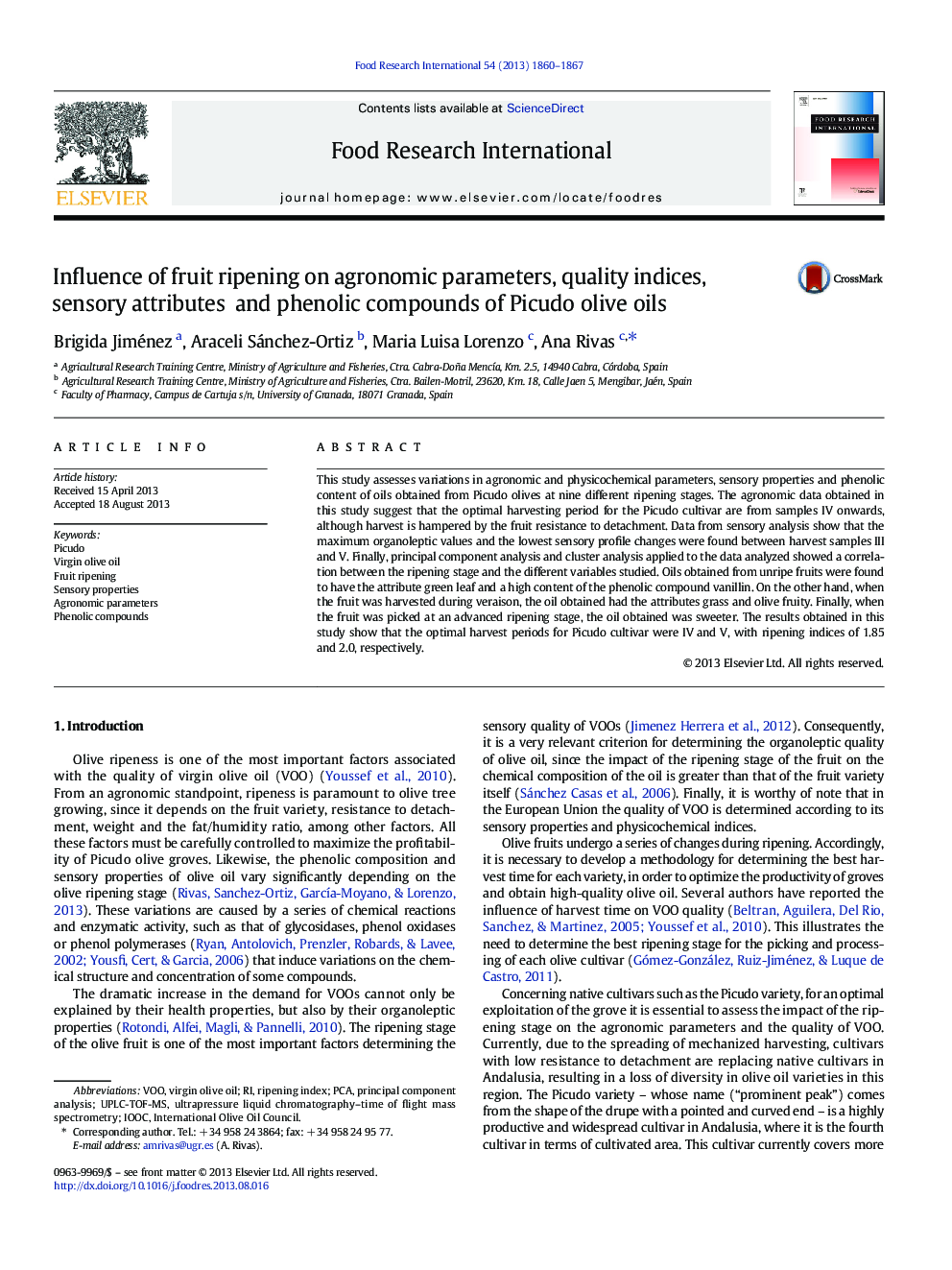| Article ID | Journal | Published Year | Pages | File Type |
|---|---|---|---|---|
| 6397465 | Food Research International | 2013 | 8 Pages |
â¢The effect of nine fruit ripening stages on Picudo olive oil was investigated.â¢The attribute green-leaf and vanillin are associated with oils from immature olives.â¢Oils were sweeter and had higher apinenin levels at advanced ripening stages.â¢The optimum ripening stage for Picudo olives is between 1.85 and 2.0.
This study assesses variations in agronomic and physicochemical parameters, sensory properties and phenolic content of oils obtained from Picudo olives at nine different ripening stages. The agronomic data obtained in this study suggest that the optimal harvesting period for the Picudo cultivar are from samples IV onwards, although harvest is hampered by the fruit resistance to detachment. Data from sensory analysis show that the maximum organoleptic values and the lowest sensory profile changes were found between harvest samples III and V. Finally, principal component analysis and cluster analysis applied to the data analyzed showed a correlation between the ripening stage and the different variables studied. Oils obtained from unripe fruits were found to have the attribute green leaf and a high content of the phenolic compound vanillin. On the other hand, when the fruit was harvested during veraison, the oil obtained had the attributes grass and olive fruity. Finally, when the fruit was picked at an advanced ripening stage, the oil obtained was sweeter. The results obtained in this study show that the optimal harvest periods for Picudo cultivar were IV and V, with ripening indices of 1.85 and 2.0, respectively.
